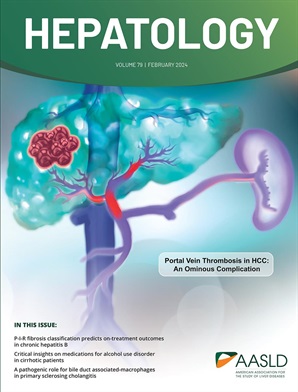使用形成性和总结性定性评价开发肝病姑息治疗干预措施。
IF 12.9
1区 医学
Q1 GASTROENTEROLOGY & HEPATOLOGY
引用次数: 0
摘要
将姑息治疗纳入终末期肝病(ESLD)的新生护理干预措施的有效性评估有限。干预措施的制定和评价是一个系统的、复杂的、耗时的过程。在干预发展过程中,建议采用定性研究方法,即形成性评估和总结性评估,以探索干预机制,确定改进的需要,并对干预的功效、有效性、实施障碍和促进因素有更深入的了解。虽然定性的形成性和总结性评估是资源密集型的,但它们提供了有关干预可行性、患者和临床医生可接受性以及以患者为中心的关键信息。本综述总结了定性、形成性和总结性评估方法如何为将姑息治疗纳入ESLD的干预措施的设计、调整和评估提供信息。我们描述了一项已完成的定性总结性评估研究,该研究嵌入了PAL-LIVER,这是一项正在进行的19个站点的随机分组试验,对ESLD患者及其护理人员进行肝病学家与姑息治疗专家主导的姑息治疗。我们纳入了患者、家庭和临床医生的人口统计数据,强调了样本如何代表家长随机对照试验,并描述了嵌入的定性研究如何探讨了患者、家庭和临床医生对干预的看法。具体而言,我们试图了解干预措施是如何制定的(保真度),并为ESLD未来姑息治疗实践的整合提供路线图。总之,形成性和总结性评估在改善干预措施方面发挥着至关重要的作用,从而公平有效地利用宝贵和稀缺的姑息治疗资源,从而使患者及其护理人员在患有ESLD的过程中获得尽可能最好的护理和生活质量。本文章由计算机程序翻译,如有差异,请以英文原文为准。
Developing palliative care interventions in liver disease using formative and summative qualitative evaluation.
Evaluation of the effectiveness of nascent care delivery interventions to integrate palliative care into end-stage-liver disease (ESLD) is limited. Intervention development and evaluation is a systematic, complex, and time-consuming process. Qualitative research approaches, known as formative and summative evaluations, are recommended during intervention development to explore intervention mechanisms, to determine the need for refinement, and to provide a deeper understanding of intervention efficacy, effectiveness, and implementation barriers and facilitators. Although qualitative formative and summative evaluations are resource-intensive, they provide critical information about intervention feasibility, patient and clinician acceptability, and patient-centeredness. This review summarizes how qualitative formative and summative evaluation methods can inform the design, adaptation, and evaluation of interventions to integrate palliative care into ESLD. We describe the completed qualitative summative evaluation study, embedded within PAL-LIVER, an in progress 19-site cluster randomized trial of hepatologist- vs palliative specialist-led palliative care for patients with ESLD and their caregivers. We include patient, family, and clinician demographic data emphasizing how the sample is representative of the parent RCT and describe how the embedded qualitative study explored patient, family, and clinicians' perspectives on the intervention. Specifically, we sought to understand how the intervention was enacted (fidelity) and to provide a roadmap for future palliative care practice integration in ESLD. In conclusion, formative and summative evaluations play a vital role in improving interventions so that valuable and scarce palliative care resources are applied equitably and effectively and so that patients and their caregivers experience the best possible care and quality of life as they live with ESLD.
求助全文
通过发布文献求助,成功后即可免费获取论文全文。
去求助
来源期刊

Hepatology
医学-胃肠肝病学
CiteScore
27.50
自引率
3.70%
发文量
609
审稿时长
1 months
期刊介绍:
HEPATOLOGY is recognized as the leading publication in the field of liver disease. It features original, peer-reviewed articles covering various aspects of liver structure, function, and disease. The journal's distinguished Editorial Board carefully selects the best articles each month, focusing on topics including immunology, chronic hepatitis, viral hepatitis, cirrhosis, genetic and metabolic liver diseases, liver cancer, and drug metabolism.
 求助内容:
求助内容: 应助结果提醒方式:
应助结果提醒方式:


